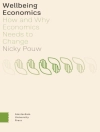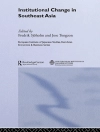This practical text equips students, researchers, and policymakers in the social sciences with the tools they need for applying mixed methods in policy research and program evaluation, from design, through data collection, and dissemination. Emphasizing the ‘how-to’—the set of conceptual and active tasks carried out by mixed methods researchers—the book is illustrated with rich case studies from the authors’ own research projects in education and public policy. These examples help readers identify and explain policy and program impacts and better understand the ‘why’ and ‘how’ of observed effects. Throughout the book, the authors describe challenges that both beginners and advanced scholars are likely to encounter when doing mixed methods research and recommend practical tools available to address them.
Table of Content
Chapter 1: Introduction: The Demand for and Value of Fully Integrated Qualitative and Quantitative Research
The Role of Mixed Methods Research in Meeting the Demand for Evidenced-Based Policy and Practice
What Distinguishes This Book in the Mixed Methods Literature
Overview of Remaining Chapters
Recommendations for How to Use This Book
Chapter 2: Conceptualizing Mixed Methods Research
Introduction
Rationale and Conditions for Mixed Methods Research
Categorizing Mixed Methods Approaches
Overview of a Fully Integrated, Mixed Methods Research Effort
Discussion Questions
Applications to Your Own Work
Chapter 3: Designing and Implementing Fully Integrated Mixed Methods Research
Introduction
Integration in Research Objectives and Design
Integration in Instrumentation Design and Data Collection
Integration in Data Analysis and Interpretation of Findings
Integration in Dissemination of Research Findings
Discussion Questions
Applications to Your Own Work
Chapter 4: Practical Tools for Integrated Mixed Methods Studies of Policy Implementation
Introduction
Mixed Methods Integration Strategy #1: Bridging Research Instruments for Qualitative and Quantitative Integration
Mixed Methods Integration Strategy #2: Mixed Methods Coding and Analysis Memoing
Mixed Methods Integration Strategy #3: Adapted Monitoring Tool and Research Reviews
Mixed Methods Integration Strategy #4: Research-to-Practice Collaborative
Conclusion
Discussion Questions
Applications to Your Own Work
Chapter 5: Fully Integrated Mixed Methods Research in K-12 and Higher Education in the United States
Introduction
Program Evaluation of Student Achievement Guarantee in Education
Racial and Ethnic Inequity in Access and Successful Student Outcomes in Higher Education
Challenges and Strategies for Addressing Challenges
Discussion Questions
Applications to Your Own Work
Chapter 6: An Application of Fully Integrated Mixed Methods in Program Development and Evaluation
Introduction
Program and Evaluation Motivation
Pilot Program Development for Child Support Debt Reduction
Demonstration Program Rollout and Early Evaluation Focus
Impact Evaluation Findings and Their Interpretation and Use
Conclusion
Discussion Questions
Applications to Your Own Work
Chapter 7: Mixed Methods Research in an International Context
Introduction
Child Support Grant Impact Evaluation in South Africa
Qualitative-Quantitative Integration Process in the CSG Impact Evaluation
Benefits of a Tightly Integrated Qualitative-Quantitative Research Approach
Conclusion
Discussion Questions
Applications to Your Own Work
Chapter 8: On the Future of Fully Integrated Mixed Methods Research: Context and Common Lessons From the Cases for the Field
How Context Matters
Broader Lessons for the Field
Concluding Thoughts
About the author
Carolyn J. Heinrich (Ph D, University of Chicago) is the Sid Richardson professor of public affairs at the Lyndon B. Johnson School of Public Affairs, affiliated professor of economics, and the director of the Center for Health and Social Policy at the University of Texas at Austin. Dr. Heinrich’s research focuses on social welfare policy, workforce development, education, econometric methods for social program evaluation, and public management and performance management. She engages in research and evaluation work to improve education and training outcomes in programs for disadvantaged youth; labor market intermediaries and labor market outcomes for low-skilled and disadvantaged workers; healthcare systems transformation and their implications for the disadvantaged; and poverty reduction programs. She regularly consults and collaborates with government agencies and nongovernmental organizations on program evaluations and in improving program and policy design and program effectiveness. In 2004, Heinrich received the David N. Kershaw Award for distinguished contributions to the field of public policy analysis and management by a person under age 40, and in 2010, she was elected to the National Academy of Public Administration. Prior to her appointment at the University of Texas in July 2011, she was the director of the La Follette School of Public Affairs at the University of Wisconsin-Madison.












